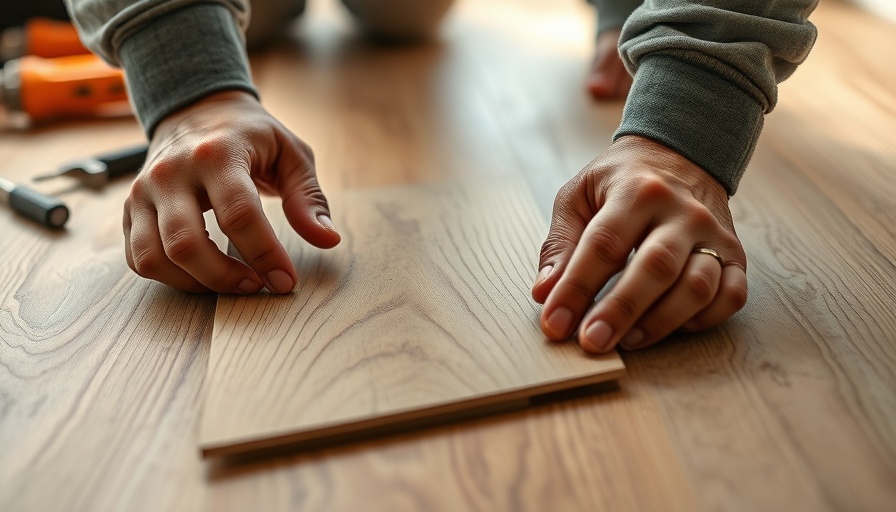
The Spurge Weeds: An Overview You Can't Ignore
As a homeowner proudly tending to your green oasis, spurge weeds can often feel like unwelcome guests that refuse to leave. These tenacious invaders belong to the genus Euphorbia and thrive in poor, compacted soils, making them a common nuisance in lawns across the United States. According to Julia Omelchenko, a specialist with Plantum, 'Spurge is a fast-growing, invasive plant that has garnered the attention of many backyard gardeners.' If you’re looking to reclaim your garden from these resilient pests, knowing more about them can equip you with the right tools and strategies.
Characteristics That Make Spurge Weeds Stand Out
Identifying spurge weeds is crucial for controlling their spread. Their growth habits are distinctive: they form dense mats that can smother out desirable grass and plants. The small, oval leaves are arranged around the stems in a unique whorled pattern, often exhibiting a reddish tint in the heat of summer. During their blooming season, tiny green or pink flowers appear, leading to the production of thousands of seeds that can settle in your soil, laying dormant for years before germinating. This incredible resilience ensures that, if not removed early, a few spurge plants can quickly multiply and dominate your lawn.
Why Spurge Weeds Are a Gardener's Nightmare
The challenge posed by spurge is two-fold: their vast reproduction capabilities and their tough nature. Not only do they spread rapidly across surfaces, but their milky sap can cause skin irritations and is toxic to pets—increasing the urgency to act. This dual threat makes prevention a homeowner's top priority.
Proactive Steps to Prevent Spurge Infestations
Like many challenges in home improvement, the best defense against spurge weeds is a good offense. Here are some effective methods to control their spread:
- Soil Health: Maintaining healthy soil can reduce the likelihood of spurge. Adding organic matter, such as compost, promotes a healthy ecosystem that can fend off invasive weeds.
- Grass Height: Keeping your grass at the recommended height according to your species can help shade out sprouts, minimizing their growth potential.
- Frequent Mowing: If spurge weeds do appear, mowing them before they flower can help reduce seed production.
Effective Removal Techniques for Spurge Weeds
So, what happens if spurge gives you the slip and takes hold in your lawn? Here are some tried-and-true tactics to reclaim your space:
- Hand Pulling: When young, spurge weeds can be pulled out by hand. However, make sure to wear gloves to avoid irritation from the sap!
- Herbicides: If the infestation is severe, consider using targeted herbicides designed to kill broadleaf plants while protecting your grass.
- Mulching: A thick layer of mulch around flower beds can discourage spurge from taking root, while also providing an aesthetically pleasing appearance.
The Emotional Connection: Why Your Lawn Matters
For many homeowners, the lawn is more than just grass; it’s a place for family gatherings, a canvas for creativity, and a patch of nature that offers peace and solace. The fight against spurge is not merely about aesthetics but about preserving the emotional and experiential richness that a well-maintained lawn can provide. By staying informed and proactive, you take steps toward creating a thriving space for you and your loved ones.
Future Predictions: The Nature of Weeds and Climate Change
Looking ahead, changes in climate may further alter how we manage our lawns. As temperatures rise and weather patterns shift, combating resilient weeds like spurge will become increasingly paramount. Adapting your lawn care routine with sustainability in mind may involve exploring organic farming techniques that not only keep your garden healthy but also benefit the planet.
Concluding Thoughts: A Call to Action for Homeowners
With spring right around the corner, now is the time to prepare for a season of growth while keeping an eye out for those invasive spurge weeds. Whether you’re creating a beautiful landscape or ensuring a safe outdoor environment for children and pets, understanding the enemy is the first step toward victory. Don’t let spurge ruin your efforts. Stay on top of your lawn care, and soon your yard will be the envy of the neighborhood!
 Add Row
Add Row  Add
Add 




Write A Comment